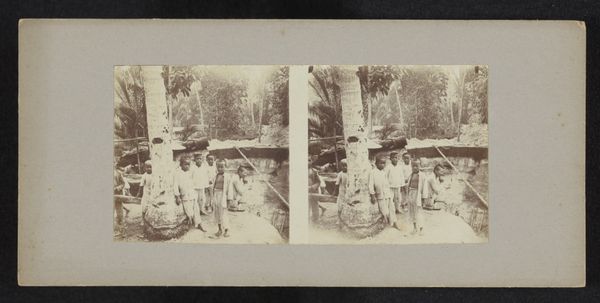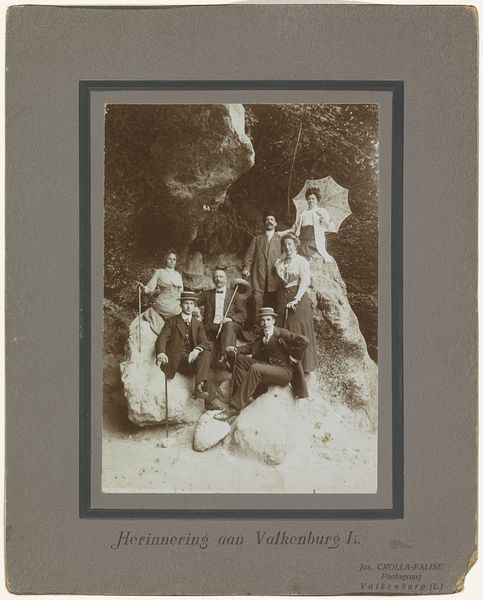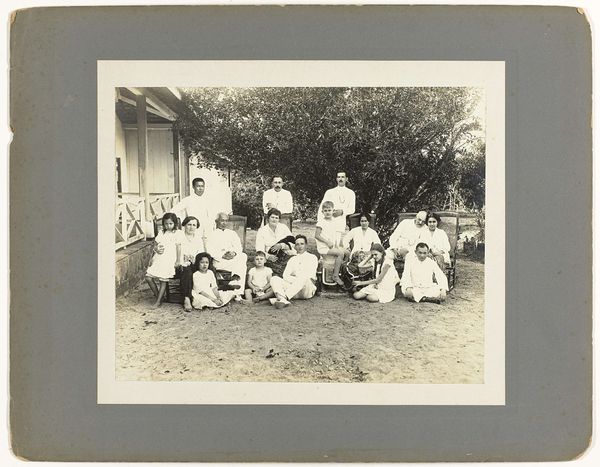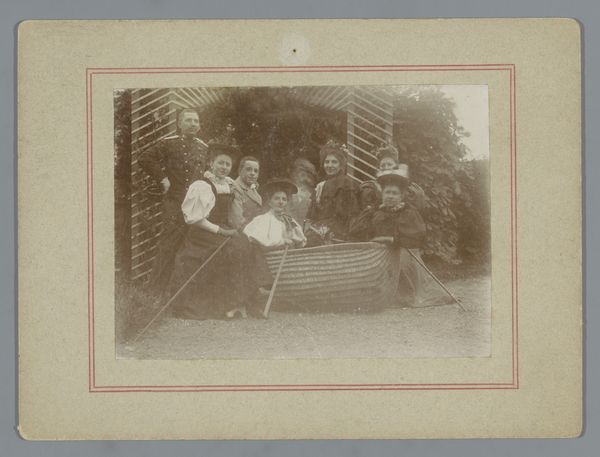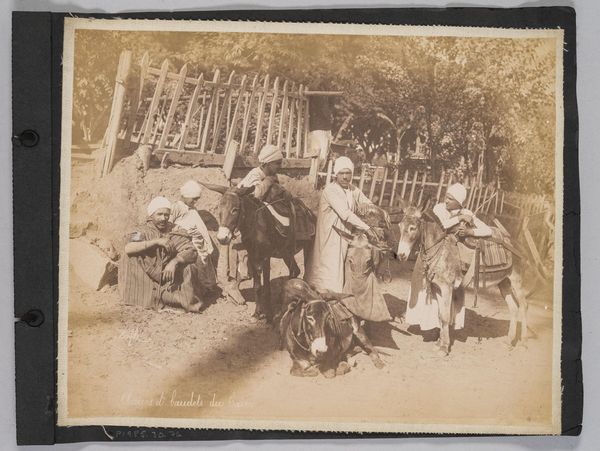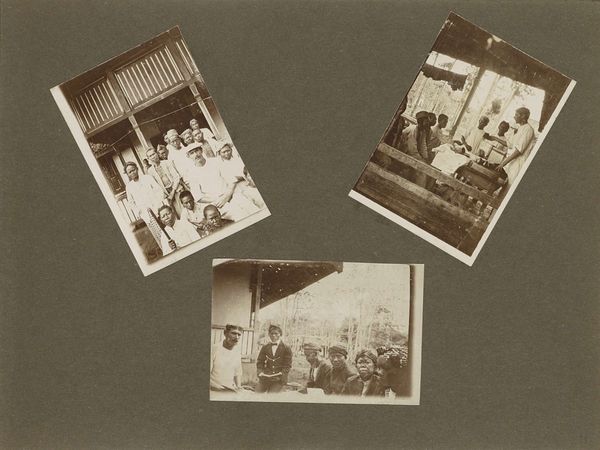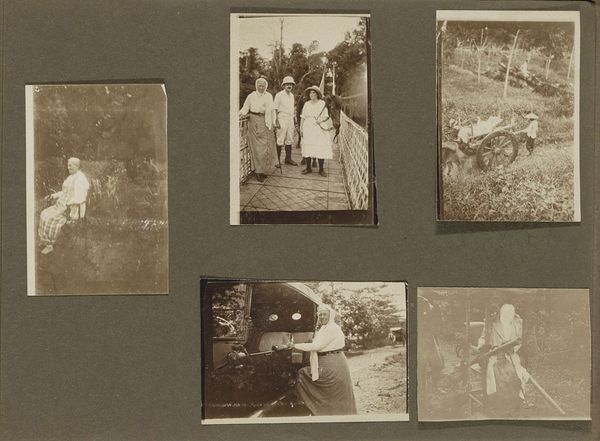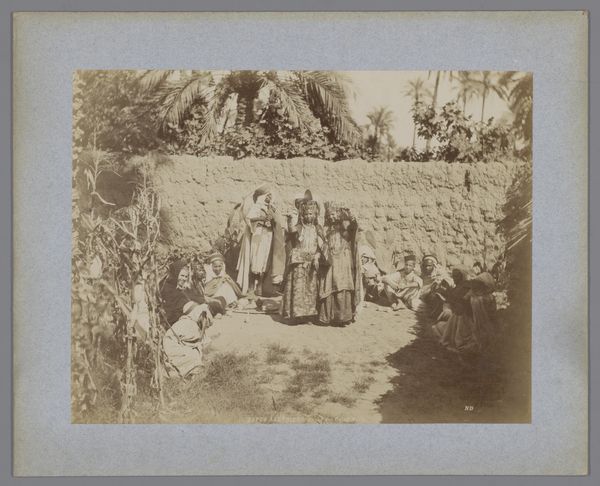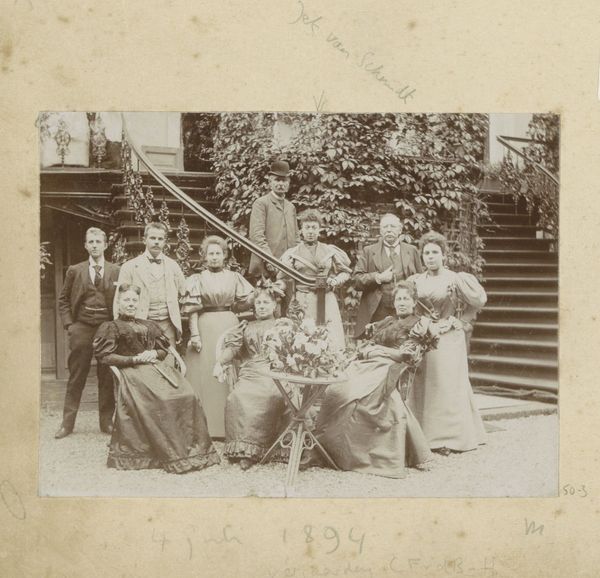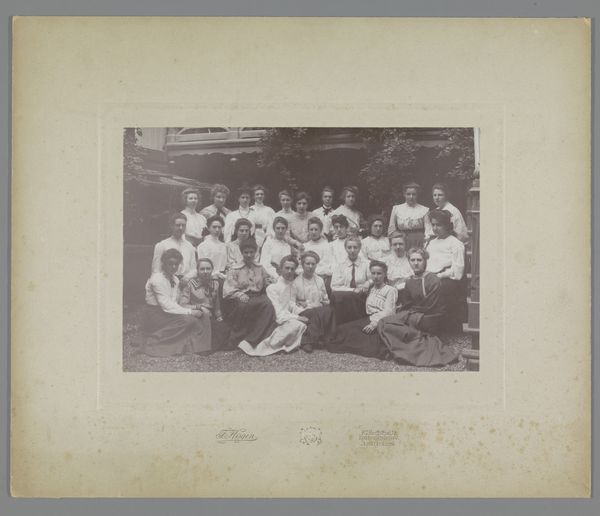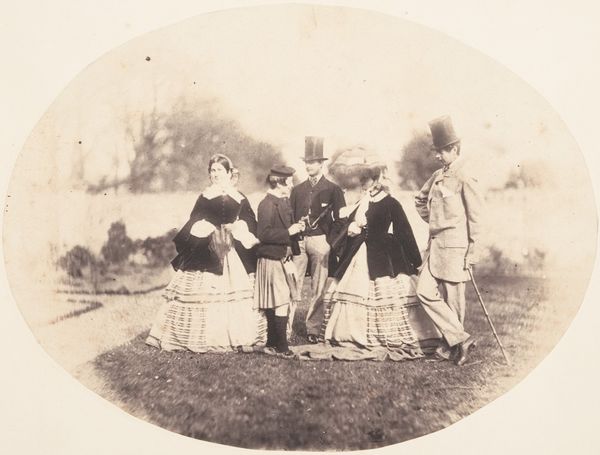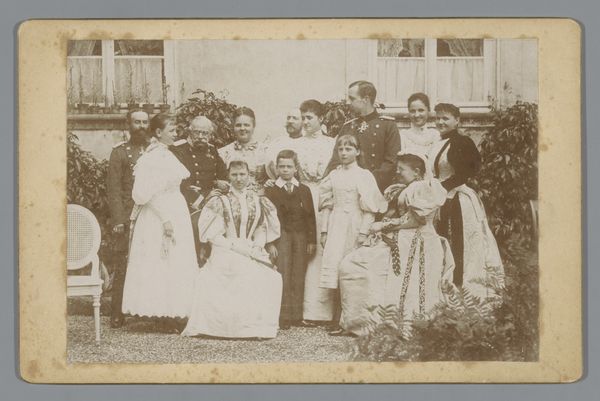![Groepsportret in tuin van een bruidspaar en familie [?], Sheringham [?], Engeland by Howard & Tansley](/_next/image?url=https%3A%2F%2Fd2w8kbdekdi1gv.cloudfront.net%2FeyJidWNrZXQiOiAiYXJ0ZXJhLWltYWdlcy1idWNrZXQiLCAia2V5IjogImFydHdvcmtzLzA1MDNhNjY0LWI5YTktNDg0OS05YjEzLTY1NDZiNDgyMTI3YS8wNTAzYTY2NC1iOWE5LTQ4NDktOWIxMy02NTQ2YjQ4MjEyN2FfZnVsbC5qcGciLCAiZWRpdHMiOiB7InJlc2l6ZSI6IHsid2lkdGgiOiAxOTIwLCAiaGVpZ2h0IjogMTkyMCwgImZpdCI6ICJpbnNpZGUifX19&w=3840&q=75)
Groepsportret in tuin van een bruidspaar en familie [?], Sheringham [?], Engeland c. 1890 - 1920
0:00
0:00
photography
#
portrait
#
photography
#
group-portraits
#
watercolor
Dimensions: height 496 mm, width 395 mm, height 496 mm, width 395 mm
Copyright: Rijks Museum: Open Domain
Curator: What strikes me immediately about this image is its quiet formality; everyone poised, yet the soft-focus and the setting feels intimate rather than grand. Editor: Indeed, that's a beautiful observation. What we have here is a photograph entitled "Groepsportret in tuin van een bruidspaar en familie [?], Sheringham [?], Engeland," taken sometime between 1890 and 1920. The image is an evocative snapshot of what appears to be a wedding party. Curator: Given the time period, the staging resonates. A wedding during the turn of the century would necessitate this particular type of memorialization through staged portraiture, wouldn't it? What stands out to me, though, are the floral garlands, both a symbol of celebration and perhaps a subtle visual assertion of the female roles within this specific social ceremony. They create an interesting power dynamic, almost overshadowing the groomsmen in their darker suits. Editor: Precisely, and the positioning is also revealing. While ostensibly marking a romantic union, it subtly mirrors the conventional hierarchy of late Victorian society, doesn’t it? The bride and groom are at the center, visually anchoring the social structure around them. Curator: Right. Analyzing the photographer's intent—if we can—and the context of this "wedding tableau," could also prompt important conversations about representation. This photograph doesn’t only commemorate union and commitment, but possibly the erasure of other gender and sexual identities too. How did the visual codification of relationships dictate belonging in the public consciousness? Editor: These early photographs held significant public influence as vehicles for shaping societal norms, indeed, even constructing idealized images of the family unit. So its role becomes particularly vital when understanding evolving ideas of the public family and institution of marriage. The image’s dissemination surely contributed to normalizing that family structure at the time. Curator: Exactly. It invites contemplation on the visual cues associated with family constructs, especially since the individuals depicted lack personal narratives or recognition beyond the frame, solidifying its powerful function in the politics of representation. Editor: Absolutely, seeing the image through that lens reminds us that beyond commemorating personal happiness, this photograph acts as a document of the performance and social coding around family and social bonds during its era.
Comments
No comments
Be the first to comment and join the conversation on the ultimate creative platform.
